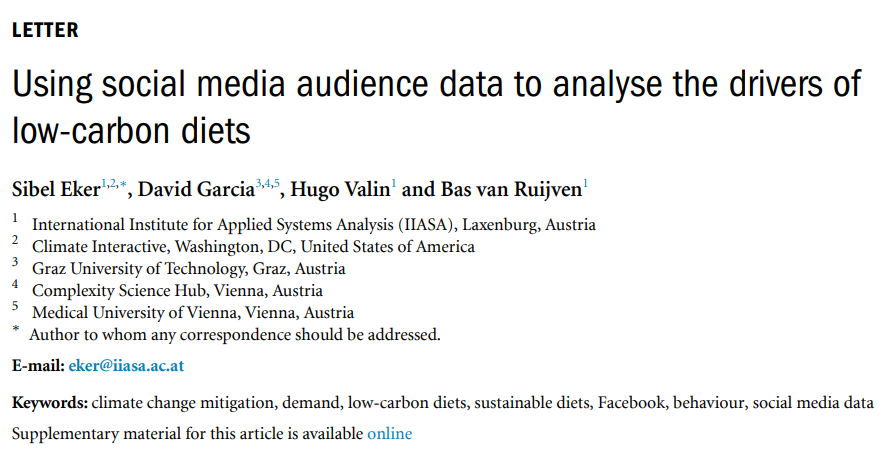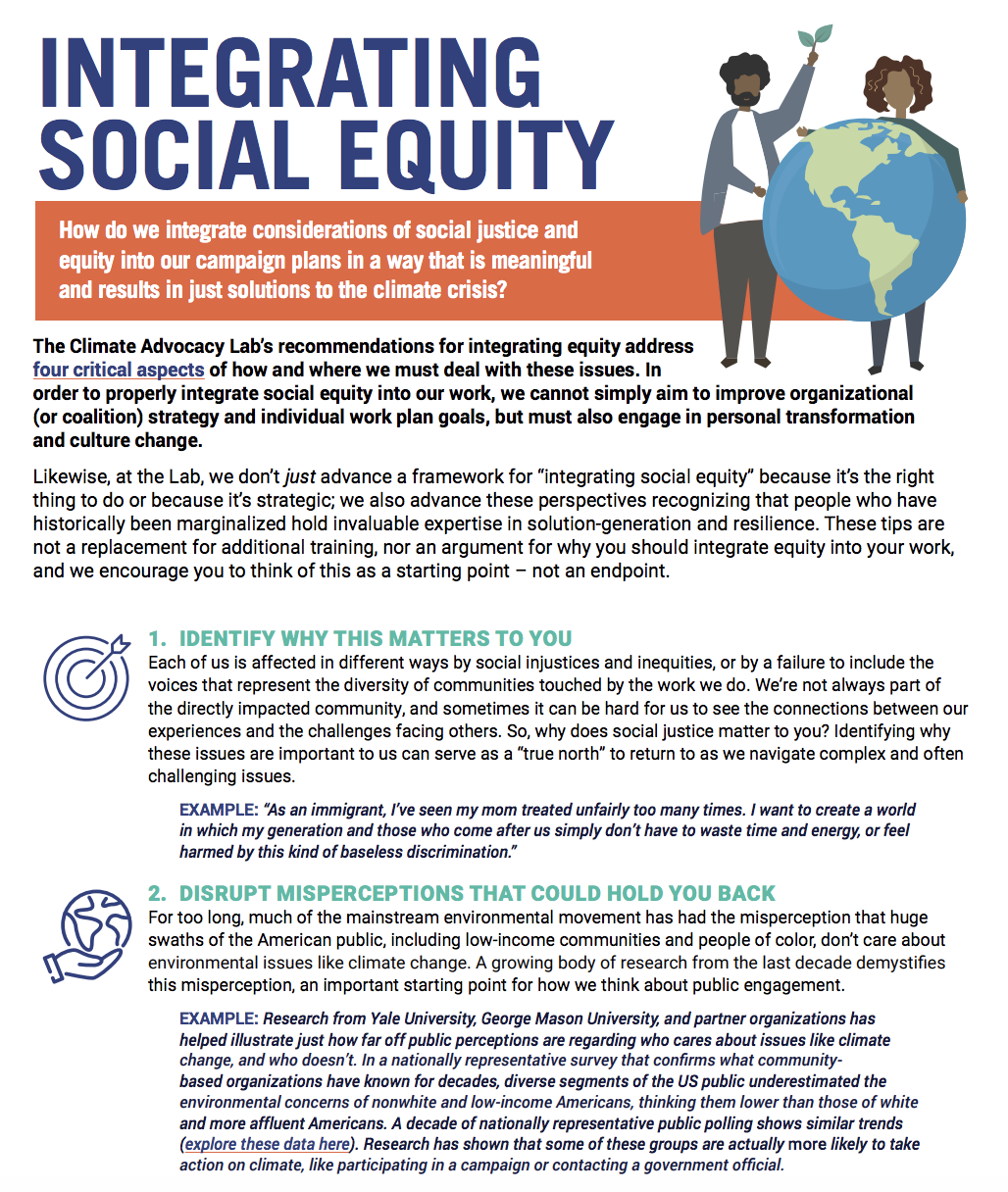Resources
Search below for resources covering the intersection of climate engagement, social science and data analytics.
RESULTS
Environmental Polling Roundup - September 10th, 2021
This post includes a roundup of climate + environment headlines from this week’s public polls, good data points to highlight, and a full roundup with key takeaways from each poll - including new polls on the Build Back Better budget, a study on the impact of language in the natural gas debate, and extreme weather polling.
HEADLINES
- Navigator - Specific details engender broad support for the Build Back Better budget, even when it’s framed as a Democratic bill (Release, Slide Deck, Topline)
- Washington Post/ABC News - The Build Back Better budget has slim majority support when described as $3.5 trillion in spending for “expanded social programs, educational assistance and programs to address climate change” (Topline, Crosstabs)
- No Labels & American Action Network - Opposition polls claim that Americans want to pause on the kind of government spending included in the Build Back Better budget (Axios Article on No Labels Poll, No Labels Release, American Action Network Release)
- Yale Program on Climate Change Communication - Language used to describe gas as an energy source is hugely impactful in shaping opinions; Americans have positive attitudes about “natural gas,” but not about methane (Academic Paper, YPCCC Article)
- Economist/YouGov - Americans continue to attribute recent extreme weather events more to climate change than natural patterns; nearly one in four say they were personally impacted by Eastern seaboard hurricanes (Topline, Crosstabs)
The One-on-One
There are six key steps to executing the best “one-on-one” conversation—specific to a union organizing setting, but potentially applicable to other settings. Step One: Discover the issues—ask open-ended questions to understand the problems the worker cares most about. Step Two: Agitate—ask provocative questions about the frustrations expressed by the worker. Step Three: Elucidate—provide your worker with alternatives, such as enhancing worker power with a union. Step Four: Make an “ask”—before assuming you will be rejected, ask the worker to take a concrete action. Step Five: Innoculate—prepare the worker for the toxic arguments that the boss will give in fighting union power. Step Six: Follow up—check in after the conversation to try to ensure consistent communication and action.
Using social media audience data to analyse the drivers of low-carbon diets
Increasing education around low-carbon diets (e.g., vegetarianism) is important for encouraging that type of behavioral shift. Using ad-based data from Facebook, the researchers analyzed individuals’ interest in vegetarianism and sustainable living across 61 countries. They find that across countries education is the main determinant of interest in vegetarian diets. While raising awareness about these diets is not a direct measure of educational attainment, the researchers conclude that raising awareness about sustainable consumption is a good step. Women are also more likely to be interested in low-carbon diets, as are younger individuals. Practitioners who aim to increase the adoption of low-carbon diets should consider these factors when developing initiative and policies.
Tipsheet: The Nine Building Blocks of an Evidence-Based Campaign Plan
When it comes to running a campaign that will build power, persuade targets, and win, the first and most important step is to design for success. Here are nine essential considerations for how to design a campaign plan that “considers the evidence” at each step of the planning process. And remember: it’s not a plan unless it’s written down! Includes guidance on:
- Developing a guiding vision and set of values for the campaign
- Selecting the right targets to pressure and influence
- Integrating equity into every step of the planning
- Developing a strong audience-centered communications strategy
- And more!
Resilience Before Disaster Interactive Webinar
This interactive webinar covered the process of how this collaboration between environmental justice and labor forces was facilitated, how they built a shared vision around resilience, a rundown of the report's key findings, and a guided activity for how to apply the report's insights to participants' local communities and organizing work.
The psychology of balancing gains and losses for self and the environment: Evidence from a carbon emission versus travel time tradeoff task
Motivational messaging can encourage people’s willingness to make trade-offs in favor of the environment. In this study, researchers find that giving people information about how longer air travel times reduce carbon emissions make people more willing to have longer travel times. This willingness was even higher for those who were told the travel time would be much longer, rather than just a little longer. Finally, the authors also find that the effects of messaging are strongest among those with higher levels of environmental concern. Members interested in encouraging trade-offs in favor of the environment should consider motivational information framing.
Community Climate Conversations: Engaging and Empowering Local Action in a Changing World
Community-based climate communications can increase awareness, facilitate interpersonal connections, and lead to climate actions. This resource studied how the Twin Ports Climate Conversations (TPCC) project in the upper Midwest has influenced local climate awareness and response. TPCC brought professional environmentalists and concerned citizens together in 2016 for a monthly climate change presentation and discussion event. TPCC highlighted a variety of climate change–oriented topics with a critical emphasis on how climate change is affecting or will affect the Western Lake Superior region and the implications of these impacts. A survey of participants in TPCC conversations found that 72% of them made professional contacts from participation and 45% had taken some kind of climate action as a result of participating in TPCC. Some prominent examples of actions included "presented on climate and extreme storms to Duluth Chapter of American Society of Civil Engineers," "incorporated the information into my classroom curricula," and "planting different trees."
From the suites to the streets: Examining the range of behaviors and attitudes of international climate activists
Inspired by previous protest movements, climate activists began taking to the streets in the fall of 2018, revitalizing and reshaping the three-decade-old climate activist movement. This metamorphosis in climate activism, which has led millions around the world to participate in climate strikes and protests, is reflected in the composition of the activists themselves, who the media frequently portray as primarily young and female. In order to better understand this new and evolving landscape, we surveyed self-identifying climate activists. Our survey provides an overview of current climate activists, their attitudes, priorities, and actions. Here we map our findings, delineating differences based on gender, age, and geography. Our results indicate that the media’s focus on young female activists is warranted (at least in Europe and North America) and we find that while activists share a commitment toward rapid and substantial reduction of greenhouse gases, their attitudes and actions taken to address climate change can significantly differ by demographic group.
Tipsheet: Integrating Equity
"How do we integrate considerations of social justice and equity into our organizational and campaign plans in a way that is meaningful and results in just solutions to the climate crisis?"
The Climate Advocacy Lab’s recommendations for integrating equity address four critical aspects of how and where we must deal with these issues. In order to properly integrate social equity into our work, we cannot simply aim to improve organizational (or coalition) strategy and individual work plan goals, but must also engage in personal transformation and culture change. This tipsheet captures the Lab's guidance of best practices to diagnose, design, and implement equity-based interventions into our advocacy work. Insights include:
- The need to identify why matters of equity and justice matter to you personally
- Clarifying specific actions to achieve just and equitable outcomes in yoru work
- Developing a cultural change strategy, and
- Adopting "equity primes"
Climate activism and its effects
Synthesis of research on the specific ways citizens have engaged civically around the issue of climate change and documented effects of these efforts on climate change itself suggests:
- Behavior-change campaigns can positively influence lifestyle choices that reduce their individual carbon footprints, such as reducing car-use, purchase renewable electricity, and eating less meat
- An increasing number of environmental NGOs is associated with lower levels of environmental degradation (including reduced carbon dioxide emissions)
- "Insufficient evidence" regarding what legal challenges/litigation have had on greenhouse gas emissions
- Targeting the economic sector and specific businesses (through boycotts, divestment campaigns, etc.) has resulted in "notable" emissions reductions
Pagination
- Previous page
- Page 2
- Next page


